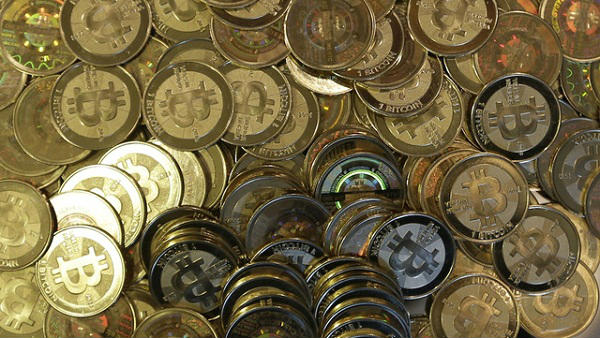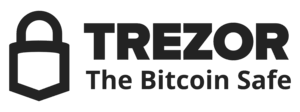The Protocol: Ethereum Turns Ten
source: CoinDesk: Bitcoin, Ethereum, Crypto News and Price Data
2025. Jul. 30. 17:04

Welcome to The Protocol, CoinDesk's weekly wrap-up of the most important stories in cryptocurrency tech development. I'm Margaux Nijkerk, CoinDesk’s Tech & Protocols reporter.
In this issue:
Ethereum At 10: Where Next For The World Computer?Linea to Burn ETH With Every Transaction in Bold L2 UpgradeSolana Players Unveil ‘Internet Capital Markets’ RoadmapSquare Begins Rollout of Bitcoin Payments for Sellers, Targets Full Availability by 2026Unknown block type "divider", specify a component for it in the `components.types` optionNetwork news
10 YEARS OF ETHEREUM: When Ethereum launched on July 30, 2015, it set out to be more than just another cryptocurrency. It aimed to expand the boundaries of blockchain technology itself. While Bitcoin became digital gold, Ethereum pursued a more expansive vision: to be a decentralized “World Computer”—programmable, extensible, and open-ended. A decade later, Ethereum has transformed finance, culture and software. Along the way, it has faced existential crises, volatile markets and fierce internal debates. Now, it stands on the cusp of a new era—one that may see it fully embraced by traditional finance. Ethereum has seen an uptick in the last two months as the project hits the 10 year milestone, with the price of ether (ETH) rebounding to reach $3,800 in July, after it languishing around $1,500 as recnetly as April. Over the last few months, the ecosystem has seen a new wave of use cases including tokenization and stablecoin growth, and the network also benefited from the trend of companies holding ETH in their treasuries, not just for long-term value, but to earn yield. On the anniversary, leading players from Ethereum's ecosystem weigh in on the last 10 years. — Margaux Nijkerk Read more.
LINEA’S COMPREHENSIVE PROTOCOL CHANGES: Linea, an Ethereum layer-2 network incubated by Consensys, has unveiled a comprehensive suite of upgrades designed to embed the network deeper into the layer 1’s economic and ideological fabric. Linea’s updated road map, expected to roll out in October 2025, introduces ETH-native staking on bridged assets, a protocol-level ETH burn mechanism, and the allocation of 85% of its token supply to ecosystem development. This move comes as momentum in the Ethereum ecosystem is building, thanks to the growing institutional interest. The Linea team wrote in a press release shared with CoinDesk that their updates will “position Ethereum to meet the needs of sophisticated capital as TradFi begins to onboard to DeFi, and reinforce Linea as a major home of future innovations in on-chain capital markets, staking, and infrastructure.” The team claims that of the updates, Linea will become the first layer 2 to burn ETH at the protocol level and commit 20% of net transaction fees toward reducing Ethereum supply. The remaining 80% of fees will be used to burn LINEA tokens, which are capped in supply, embedding deflationary pressure directly into network activity. “Linea Mainnet will burn ETH with every transaction, use the LINEA token to support users, builders, and public goods, and return value to Ethereum’s base layer, all while growing long-term value in the LINEA token-based economy,” said Declan Fox, Head of Linea, in the press release. — Margaux Nijkerk Read more.
SOLANA PLAYERS UNVEIL ‘INTERNET CAPITAL MARKETS’ ROADMAP: Solana’s ecosystem is coalescing around an updated vision its architects call “Internet Capital Markets”—a decentralized, high-performance foundation for the next generation of on-chain financial applications. While the network has long focused on boosting bandwidth and slashing latency, its latest roadmap dives deep into market microstructure, arguing that the next leap forward lies in giving applications granular control over transaction execution. The roadmap, which was coauthored from leaders of the Solana Foundation, Anza, Jito Labs, DoubleZero, Drift and Multicoin Capital, centers on Application-Controlled Execution (ACE), which will give smart contracts millisecond-level authority over transaction sequencing. “In our conversations with teams across the ecosystem, market microstructure is the single most important problem in Solana today,” the authors wrote. The new roadmap, published by Anza, a core contributor to the Solana blockchain, outlines six critical tradeoff dimensions: privacy vs. transparency, speedbumps vs. unfettered trading, inclusion vs. finality vs. latency, colocation vs. geographic decentralization, makers-first vs. takers-first priorities and flexible vs. opinionated architecture. — Margaux Nijkerk Read more.
SQUARE BEGINS ROLLOUT OF BTC PAYMENTS FOR SELLERS: Jack Dorsey's Square (XYZ) has begun the rollout of bitcoin payments for merchants on its network. Square began onboarding the first sellers, enabling them to accept Lightning Network-powered BTC payments from customers, Owen Jennings, executive officer at Square's parent company Block (XYZ), posted on X last week. Payments are settled in real-near time using Bitcoin layer-2 Lightning, with Square processing the exchange into fiat. Square plans to make the service available to all merchants using its sales platform by next year. The company piloted the system at the Bitcoin 2025 conference in Las Vegas in May, allowing attendees to make purchases in BTC by scanning a barcode. — Jamie Crawley Read more.
Unknown block type "divider", specify a component for it in the `components.types` option




